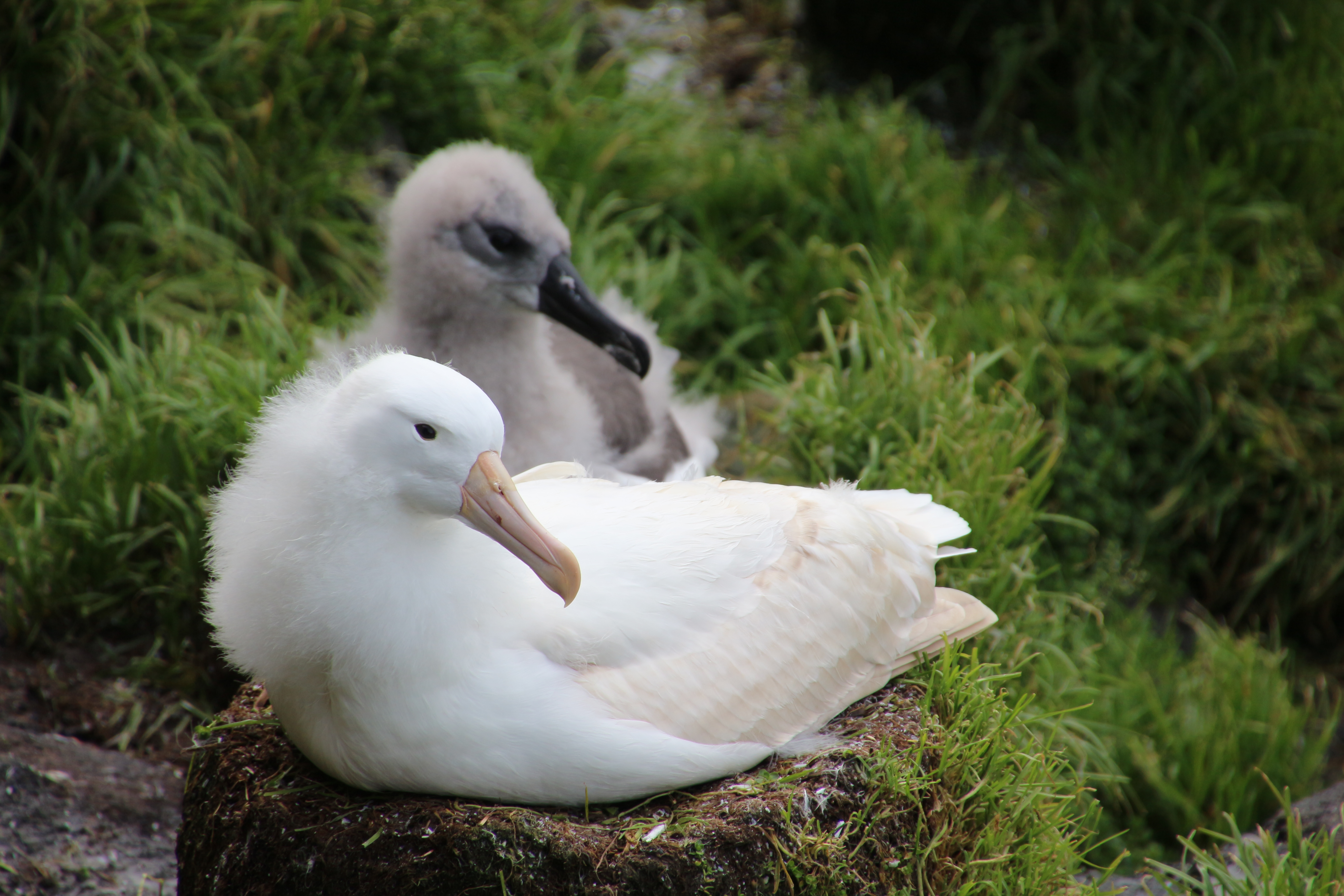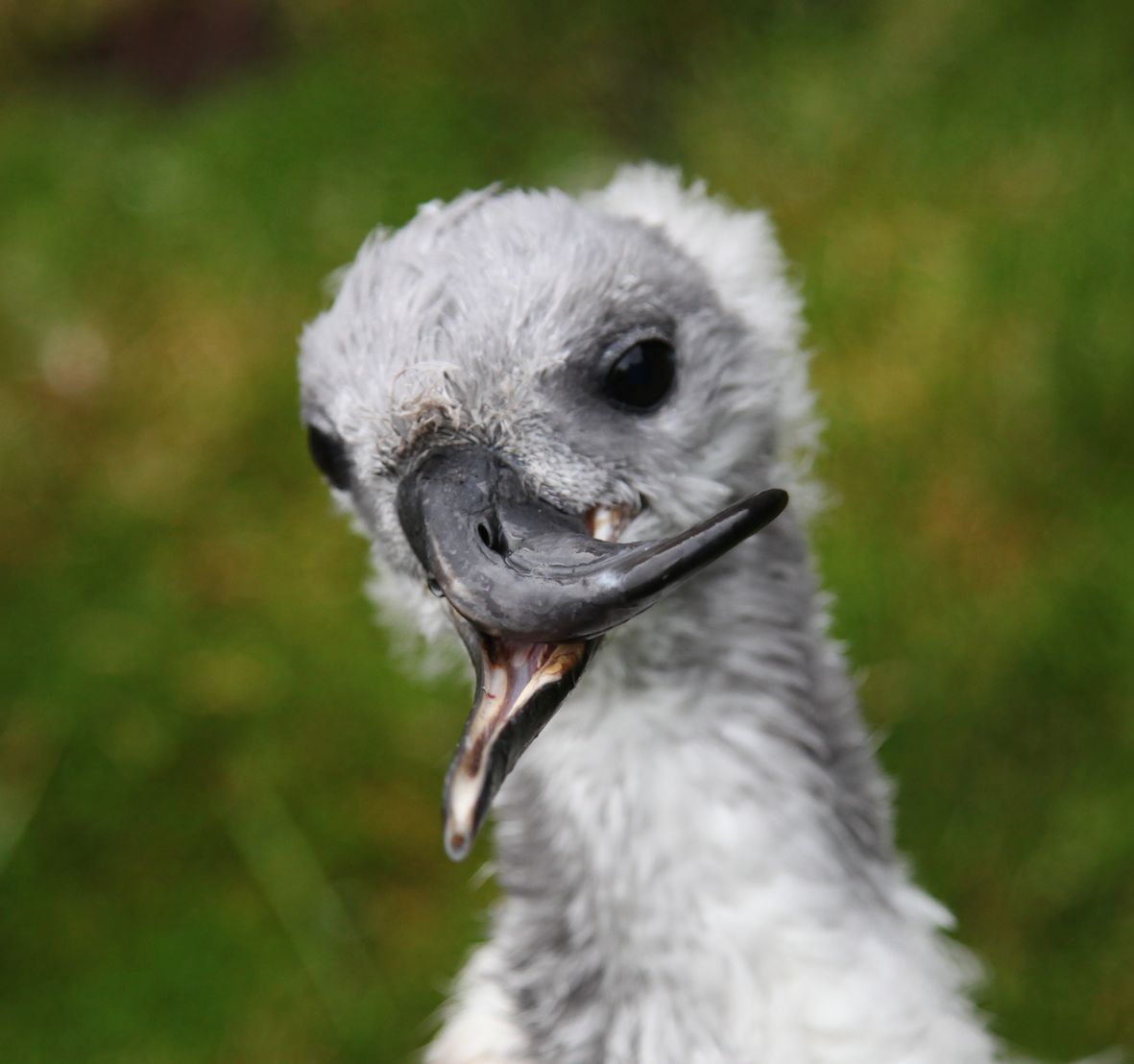Michelle Risi (FitzPatrick Institute of African Ornithology, University of Cape Town, Rondebosch, South Africa) and colleagues have published in the journal Polar Biology on plumage and bill abnormalities in Grey-headed Thalassarche chrysostoma and Light-mantled Phoebetria palpebrata Albatross chicks.
The short note’s abstract follows:
“Accessible colonies of Grey-headed Albatross Thalassarche chrysostoma chicks on Marion Island have been inspected for chicks presenting mouse wounds from 2015, and during these inspections we found several cases of plumage and bill abnormalities. We report on two cases of leucism and three cases of ‘bent-beak syndrome’ in Grey-headed Albatross chicks, and one case of ‘bent-beak syndrome’ in a Light-mantled Albatross Phoebetria palpebrata chick. The leucistic Grey-headed Albatross chicks were found in 2018 and 2019, and both apparently fledged successfully. Three Grey-headed Albatross chicks with deviated upper mandibles were recorded in 2015, 2018 and 2019, and a single Light-mantled Albatross chick with deviated upper mandible was recorded in a study colony in 2014. None of these chicks survived to fledge. These appear to be the first records of leucism for Grey-headed Albatross, and the first records of bill deformities in any albatross species. Although bill deformities may have been overlooked in the past among Grey-headed and Light-mantled Albatrosses at Marion Island, it is worrying that we have had four records in the last few years. Albatrosses have been intensively studied at many colonies for more than 50 years, and we would have expected previous records of the ‘bent-beak syndrome’ if it occurred naturally at low levels, suggesting a novel threat to these seabirds.”

Leucistic Grey-headed Albatross chick - with a normally-plumaged chick behind, photograph by Chris Jones

‘Bent-beak syndrome’ in a Grey-headed Albatross chick, photograph by Peter Ryan
With thanks to Michelle Risi for information.
Reference:
Risi, M.M., Jones, C.W., Schoombie, S. & Ryan, P.G. 2019. Plumage and bill abnormalities in albatross chicks on Marion Island. Polar Biology doi.org/10.1007/s00300-019-02528-x.
John Cooper, ACAP Information Officer, 26 July 2019

 English
English  Français
Français  Español
Español